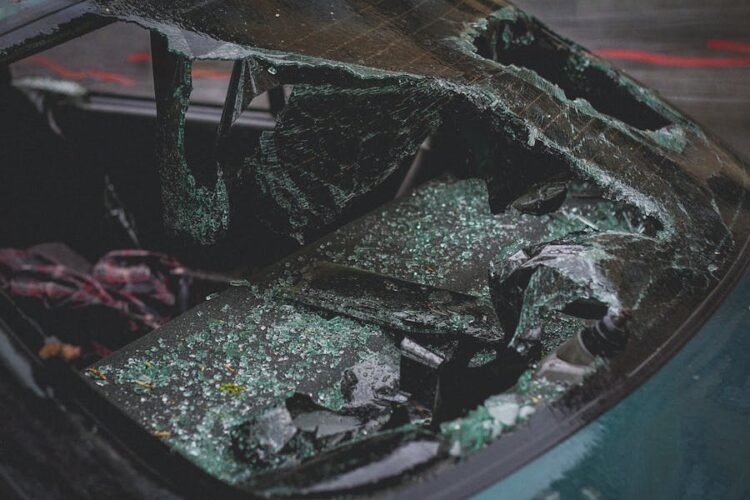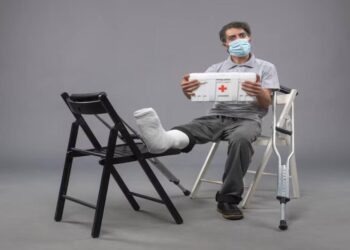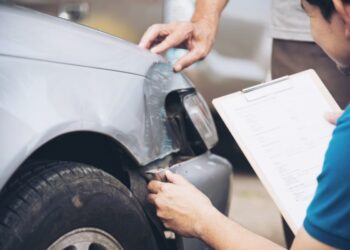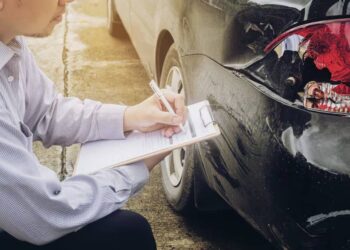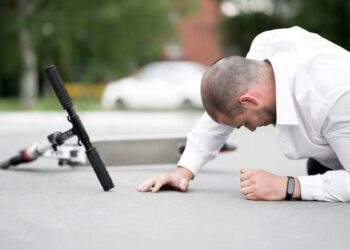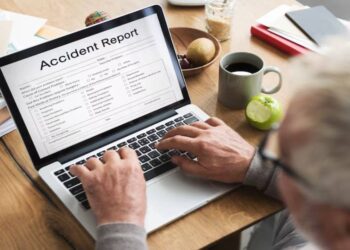Car accident cases involving uninsured drivers in St. Petersburg present unique challenges that require specialized legal expertise. When victims face mounting medical bills and lost wages without access to the at-fault driver’s insurance coverage, experienced attorneys must navigate Florida’s complex no-fault system while pursuing alternative compensation routes. The strategic approach taken by St. Petersburg car accident lawyers combines thorough investigation, documentation of damages, and exploration of multiple recovery options to protect their clients’ interests.
Understanding Florida’s No-Fault Insurance System
Florida’s no-fault insurance system requires all drivers to carry Personal Injury Protection (PIP) coverage, which pays for medical expenses and lost wages regardless of who caused the accident. This coverage provides up to $10,000 in benefits and must be used before pursuing claims against the at-fault driver’s insurance.
Under this system, drivers must file claims with their own insurance companies for medical bill recovery, even if another party caused the collision. Insurance companies may pursue subrogation claims against the at-fault driver’s insurer to recover paid benefits. However, victims can step outside the no-fault system and sue the at-fault driver directly if their injuries meet Florida’s “serious injury” threshold, which includes permanent injuries, significant scarring, or disfigurement.
Investigating Uninsured Motorist Coverage Options
Florida drivers can protect themselves against uninsured motorists through specialized coverage that extends beyond basic no-fault insurance requirements. Uninsured motorist coverage provides compensation when the at-fault driver lacks insurance or has insufficient coverage to pay for damages and injuries. Alternative coverage options include stacked coverage, which allows policyholders to combine coverage limits across multiple vehicles, and non-stacked coverage, which maintains separate limits for each insured vehicle.
Coverage Types and Limits
When investigating a car accident claim in St. Petersburg, attorneys must thoroughly analyze available coverage types and policy limits. Insurance coverage typically falls into several categories: bodily injury liability, property damage liability, personal injury protection (PIP), and uninsured/underinsured motorist coverage.
Florida law requires minimum coverage limits of $10,000 for PIP and $10,000 for property damage liability. However, these basic limits often prove inadequate in serious accidents. Experienced attorneys examine policy declarations pages to identify additional coverage options, including umbrella policies and stacked coverage. They also review whether the policy includes medical payments coverage, all-inclusive coverage, or collision coverage.
Understanding these coverage types and their respective limits enables attorneys to maximize potential compensation sources for their clients, particularly when dealing with uninsured motorist claims.
Filing Alternative Coverage Claims
Insurance coverage limitations often necessitate exploring alternative claims options, particularly in cases involving uninsured or underinsured motorists. St. Petersburg attorneys assist clients in identifying and pursuing additional coverage sources, including personal injury protection (PIP) benefits and health insurance claims.
The process typically begins with filing accident reports and documenting all available insurance policies. Lawyers examine potential coverage through household member policies, employer-provided insurance, or umbrella policies. When submitting claim forms, attorneys guarantee compliance with specific filing deadlines and documentation requirements for each type of coverage.
Additionally, legal professionals investigate whether third-party claims are viable, such as pursuing property owners for inadequate maintenance or manufacturers for defective vehicle components. This thorough approach maximizes potential compensation sources when primary insurance coverage proves insufficient.
Gathering Evidence and Documentation After the Accident
Proper documentation and evidence collection immediately following a car accident can substantially impact the success of a legal claim. St. Petersburg car accident attorneys emphasize the importance of gathering eyewitness statements and contact information before witnesses leave the scene. Documentation should include detailed photographs of vehicle damage, road conditions, traffic signals, and skid marks.
Essential evidence encompasses police reports, medical records, hospital bills, insurance correspondence, and proof of lost wages. An attorney will focus on documenting accident scene details through photographs, videos, and measurements while conditions remain unchanged. They may also secure surveillance footage from nearby businesses or traffic cameras. Additional documentation includes weather reports, vehicle maintenance records, and any communication with insurance adjusters. This exhaustive evidence collection strengthens the claim, particularly when dealing with uninsured motorist cases.
Establishing Liability in Uninsured Driver Cases
Determining liability in uninsured driver accidents requires an extensive legal strategy that differs from standard collision cases. Legal professionals must focus on establishing causation factors through thorough investigation and documentation, as there is no insurance company to facilitate the claims process.
Attorneys prioritize preserving accident scene evidence, including photographs, witness statements, and surveillance footage, to build a strong foundation for liability claims. They analyze police reports, medical records, and expert testimonies to demonstrate the uninsured driver’s responsibility for damages. Additionally, lawyers investigate alternative sources of compensation, such as the victim’s uninsured motorist coverage or potential third-party liability.
The process often involves detailed reconstruction of the accident sequence, identification of traffic violations, and documentation of any contributing circumstances that establish the uninsured driver’s negligence or reckless behavior.
Exploring Alternative Sources of Compensation
When an accident involves an uninsured driver, victims can access Personal Injury Protection (PIP) benefits through their own insurance policy for immediate medical expenses and lost wages. Beyond PIP benefits, victims may pursue direct legal action against the at-fault driver’s personal assets, though this approach often yields limited results due to the defendant’s financial constraints. Third-party liability claims present another avenue for compensation by identifying additional responsible parties, such as vehicle manufacturers, maintenance companies, or government entities responsible for road conditions.
Personal Injury Protection Benefits
Under Florida’s no-fault insurance system, Personal Injury Protection (PIP) benefits serve as a critical source of compensation for car accident victims in St. Petersburg. These benefits cover up to 80% of medical expenses and 60% of lost wages, regardless of fault, with coverage typically capped at $10,000.
Insurance coverage maximization requires understanding PIP’s specific provisions and limitations. Victims must seek medical treatment within 14 days of the accident to qualify for benefits, making timely claim filing imperative. PIP benefits extend to the policyholder, household relatives, vehicle passengers, and pedestrians struck by the covered vehicle.
St. Petersburg accident victims should document all medical expenses and wage losses meticulously. A car accident lawyer in St. Petersburg can help navigate the complexities of PIP claims, ensuring proper documentation and adherence to filing deadlines for maximum benefit recovery.
Suing At-Fault Party Directly
Although PIP benefits provide initial coverage, St. Petersburg accident victims may pursue direct legal action against uninsured drivers through civil litigation. This process involves filing a lawsuit to recover damages exceeding PIP limits and addressing non-economic losses.
When calculating damages, attorneys evaluate medical expenses, lost wages, pain and suffering, and long-term disability costs. Legal teams investigate the at-fault driver’s personal assets, including real estate holdings, investments, and future earnings potential, to determine collection possibilities.
While negotiating settlements with uninsured drivers can be challenging, experienced attorneys may secure compensation through payment plans or property liens. Courts may also mandate wage garnishment to guarantee compliance with judgment orders. This approach requires thorough documentation of damages and persistent enforcement of legal remedies to maximize recovery potential.
Third-Party Liability Claims
Beyond direct claims against uninsured drivers, third-party liability claims offer additional avenues for compensation in St. Petersburg accident cases. These claims involve identifying other parties who may share responsibility for the accident and resulting damages.
Third-party liability claims can target vehicle manufacturers for defective parts, government entities for poorly maintained roads, or businesses whose employees caused accidents while on duty. Property owners may also face negligence allegations if hazardous conditions on their premises contributed to the collision.
Establishing these claims requires thorough investigation and documentation of each party’s role in the accident. An experienced attorney can analyze maintenance records, surveillance footage, and workplace policies to build a strong case. They must also navigate complex legal requirements for filing claims against different types of entities, each with specific deadlines and procedural rules.
Legal Strategies for Recovering Personal Assets
Securing personal assets after a car accident requires implementing strategic legal approaches through proper documentation, timely filings, and expert representation. Attorneys employ various methods to protect clients’ financial interests, including establishing liens on the at-fault party’s property, pursuing wage garnishment, and identifying hidden assets through forensic investigation.
Financial asset protection strategies often involve filing motions to prevent the defendant from transferring or concealing assets during litigation. Protecting personal savings requires swift action to guarantee court orders that freeze accounts and prevent asset dissipation. Attorneys may also negotiate structured settlements that maintain long-term financial stability while maximizing recovery potential.
Legal professionals frequently collaborate with financial experts to assess the defendant’s asset portfolio, verifying all available resources are considered when pursuing compensation for their clients’ damages and losses.
Meeting Florida’s Serious Injury Threshold Requirements
Under Florida law, car accident victims must meet specific injury threshold requirements to pursue claims for non-economic damages such as pain and suffering. The state requires clear evidence of permanent injury, significant scarring, or substantial loss of bodily function before allowing these claims to proceed.
Meeting medical necessity requirements involves thorough documentation from qualified healthcare providers who can verify the extent and permanence of injuries. Demonstrating permanent injury typically requires in-depth medical evaluations, diagnostic imaging, and expert testimony establishing that the victim’s condition will not improve with further treatment.
To satisfy the threshold, victims must provide evidence of injuries that fall within statutory categories, including significant limitation of important bodily functions, permanent injury within reasonable medical probability, or permanent scarring and disfigurement that impacts daily activities.
Negotiating With Insurance Companies and Third Parties
Successfully negotiating with insurance companies and third parties requires extensive knowledge of Florida insurance laws, established settlement protocols, and effective communication strategies. Experienced St. Petersburg car accident attorneys maintain detailed documentation of all damages, medical expenses, and lost wages while handling complex claims with multiple parties.
The negotiation process involves presenting compelling evidence, countering lowball offers, and strategically leveraging Florida’s insurance regulations to pursue maximum compensation. Attorneys skilled in negotiating fair settlements understand the tactics insurers use to minimize payouts and can effectively challenge claim denials. They also coordinate with medical providers, employers, and other involved parties to establish the full scope of damages. When dealing with uninsured drivers, lawyers explore alternative compensation sources, including the client’s uninsured motorist coverage or potential third-party liability claims.
Taking Your Case to Court: The Litigation Process
When settlement negotiations fail to yield satisfactory results, experienced St. Petersburg car accident attorneys prepare their cases for litigation. The process begins with filing a formal lawsuit and proceeding through the discovery phase, where both parties exchange evidence and documentation.
Before proceeding to trial, attorneys typically focus on exploring mediation options, which can provide a more cost-effective resolution while maintaining control over the outcome. If mediation proves unsuccessful, the case moves forward to court proceedings. Attorneys develop thorough trial strategies, prepare witnesses, and gather expert testimony to support their clients’ claims.
Throughout the trial process, lawyers concentrate on maximizing jury awards by presenting compelling evidence, demonstrating the full extent of damages, and establishing clear liability. They navigate complex procedural requirements while advocating for their clients’ rights and interests before the court.
Frequently Asked Questions
How Long Do I Have to Report a Car Accident in Florida?
Florida law requires accident notification within 10 days for crashes involving injuries, death, or property damage over $500. For insurance claims, the reporting timeline is typically 24-48 hours after the accident occurs.
Can I Sue an Uninsured Driver if I Was Partially at Fault?
Under Florida’s comparative negligence system, drivers can pursue claims against uninsured motorists even with partial fault. Courts assess each party’s liability percentage, reducing compensation proportionally based on the claimant’s degree of responsibility in the accident.
Will My Insurance Rates Increase if I Use Uninsured Motorist Coverage?
Filing an uninsured motorist claim may lead to higher premiums with some insurance carriers. While it requires more claims paperwork, using this coverage typically has less impact than filing an at-fault collision claim.
What Happens if the Uninsured Driver Declares Bankruptcy After the Accident?
When an uninsured driver files bankruptcy, the victim’s claim becomes part of the bankruptcy estate. Recovery options may be limited, but victims can still file claims against the bankruptcy estate for potential compensation.
Can I Still Recover Damages if the Uninsured Driver Leaves the State?
Pursuing an uninsured driver across state lines remains possible through cross border jurisdiction, though enforcement challenges may arise. Courts can still issue judgments, but collecting damages often becomes more complex and time-consuming.


